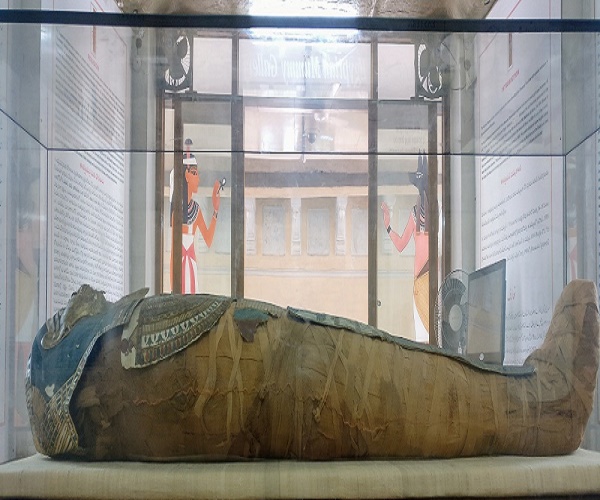There are a total of six museums in the country housing one Egyptian mummy each, but the Telangana State Archaeology Museum at Public Gardens is the only one to take up and complete a non-invasive preventive conservation project.
The city now has the proud distinction of being the only home to an Egyptian mummy that is completely conserved and protected in a nitrogen chamber.
There are a total of six museums in the country housing one Egyptian mummy each, but the Telangana State Archaeology Museum at Public Gardens is the only one to take up and complete a non-invasive preventive conservation project and provide a lifetime of protection-from-decay to a centuries-old mummy.
Renowned art and heritage conservation expert Anumpan Sah had helped the Department of Archaeology and Museums when the officials were on a hunt for technical advice on protecting the mummy.
The conservation effort was to keep the authenticity of the mummy intact but restore it in a way that takes it back to its past mummification. The toes and skull of the mummy were visible, which means the mummy had direct contact with air, says Sah.
“Also, the fabric around the head was falling apart and the overall covering had become loose, so we fixed it all without adding anything to it. Only a fine mesh in brown colour was added as a protective wrapping layer so that the original garment remains intact for a long time. The mesh gels well with the colour of the mummy’s original covering and is hardly visible,” says Sah who was knighted in 2016 by the government of Italy for his extensive conservation work.
“This mummy is now the only one in the country to be given a completely oxidation-free environment. The showcase we have moved it into is connected to a nitrogen box below it, which supplies nitrogen and throws out oxygen 24/7, thus preventing any kind of decay or further ageing of the mummy,” says department Director NR Visalatchy.
The mummy is believed to be between 2,100 and 2,400 years old, named Nishuha and aged 25. It was brought to Hyderabad as a gift to the last Nizam Osman Ali Khan by Nazeer Nawaz Jung, the son-in-law of his predecessor, in the year 1920. The museum received it as a donation from the last Nizam in 1930 and has been the home for the mummy ever since.
Mummification of important people was the tradition in ancient Egypt, and Nishuha is believed to be a princess; the daughter of a Pharoah.
The skull and toes of Nishuha, which had been visible to visitors for years, were exciting aspects of the mummy, and some visitors are now disappointed to see the mummy fully covered, officials at the museum said.
“An absolute wrapping bodes well for the protection of the mummy but some visitors are not at all happy about it. Many of our visitors are old residents of the city, who had seen the mummy’s toes and skull. They get their children and grandchildren to show these parts, but walk away disappointed,” said a museum official.
The identity and age of the Egyptian mummy at the State museum was not always as clear as it is today. Two chance encounters turned out to be the saving grace, identifying the mummy as Nishuha, and not Naishu, Leshu or Nasihu; names commonly used for the mummy for decades.
Nishuha was also identified as being 25 years of age at the time of her death, instead of 16-18 years of age as is written in the introduction at the museum gallery.
Two conservation experts from Egypt’s Supreme Council of Antiquities (SCA) had visited the State museum for consultation in 2009, and they were able to read the ‘Khate Mekhi’, or nail script, that came with the mummy and was undeciphered until then.
“The whole biography of the girl is written on the panel, which is painted with nails, as was the custom in Egypt. Nobody understood it until the two experts came down to advise on preservation techniques. They read the Mekhi and said the name of the girl was Nishuha, and that she was the daughter of the Pharoah VI of Egypt, probably belonging to 300-100 BC, and not 2,500 BC as was believed by us earlier,” said a senior museum official.
The long-gone princess was reckoned to be a teenager ever since the Nawab brought the mummy for 1,000 British pounds. Medical scans conducted for the preventive conservation work taken up by Anupam Sah, however, corrected the age of the girl to be 25 at the time of her death, and also revealed a metallic piece, an amulet kept with mummies for protection from evil supernatural forces in Arab and Egyptian traditions, officials said. #KhabarLive







